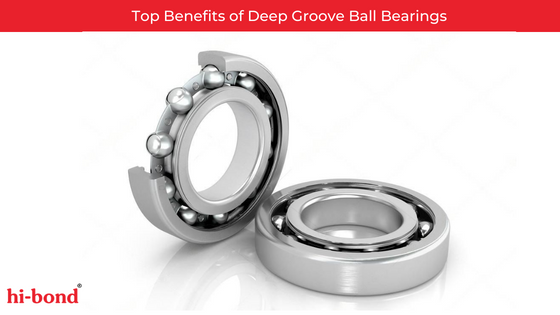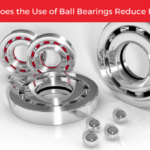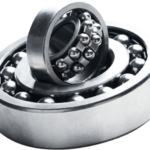Rolling bearings and bushes are crucial to every machine element that rotates or oscillates. They assist in transferring loads between various components, including axles, shafts, and wheels, and supporting and guiding rotational movement. However, selecting the bearing from a reputed bearing manufacturer is important to meet your company’s demands.
Today, Deep Groove bearings have gained great popularity among bearings and bushes users. You may learn how deep Groove bearings can benefit you in this blog.
What are Deep Groove Ball Bearings?
Deep groove ball bearings are a type of rolling-element bearing particularly well-suited for applications with high radial loads. Deep Groove ball bearings typically have lower frictional resistance than other rolling-element bearings, making them ideal for high-speed applications. In addition, deep groove ball bearings can accommodate misalignment between the shaft and housing, making them ideal for use in machinery subject to vibration or shock loading.
Read More: Top Differences Between Single & Double Row Bearing
Deep Groove Ball Bearings are classified into two:
Deep Groove Ball Bearing with a Single Row
These ball bearings are well suited for applications requiring high speeds and little power loss since they have low torque. In addition, these bearings frequently feature steel shields or fitted rubber seals on one or both sides to supplement open-type bearings.
Deep Groove Ball Bearing with Two Rows
These ball bearings are similar to single-row deep groove ball bearings in design. However, they feature deep, continuous raceway grooves closely aligned with the balls. Due to this, the bearings and bushes can support loads in both axial and radial directions.
There are several industries that use deep-groove ball bearings. Some of the most common ones include automotive, aerospace, industrial and agricultural.
- Automotive: In the automotive industry, deep groove ball bearings are used in various applications, including engines, transmissions, and steering systems.
- Aerospace: In aircraft, they’re used in various components, including landing gear, control surfaces, and engine mounts.
- Industrial: In industrial settings, they’re found in applications such as conveyors, pumps, and electric motors.
- Agricultural: They’re also used in machineries such as tractors and harvesters.
How Do They Work?
Deep groove ball bearings are designed to accommodate both radial and thrust loads. And can be found in a wide variety of applications. Deep groove ball bearings work by having an inner and outer ring with a set of balls in between. The balls are free to rotate; as they do so, they help keep the bearing in place. The balls also help to reduce friction, making the bearing more efficient. There are many benefits to using deep groove ball bearings in your machinery. They are durable, require little maintenance, and are relatively inexpensive. Deep groove ball bearings can also handle both radial and thrust loads, making them versatile and suitable for a wide range of applications.
Scroll down to learn the benefits of using deep-groove ball bearings.
The Top Benefits of Using Deep Groove Ball Bearings in Your Machinery
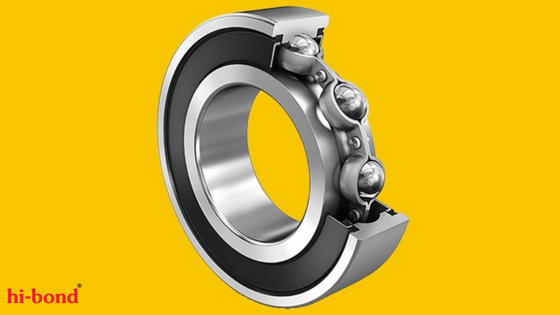
Being one of the most common types of bearings and bushes used in machinery, they are versatile and can be used in various applications, from small motors to large industrial equipment. There are many reasons why you should use deep groove ball bearings in your machinery, including:
1. Increased reliability:
Deep groove ball bearings are very strong and durable and can withstand a lot of wear and tear. It makes them ideal for use in high-speed or heavy-duty machinery, where they are less likely to fail than other bearings.
2. Improved efficiency:
Deep groove ball bearings have a lower friction coefficient than other types of bearings and bushes, requiring less energy to operate. It can lead to reduced operating costs and improved efficiency in your machinery.
3. Radial and Axial Loads Capability:
The inability of conventional ball bearings to support axial loads is one of their biggest limitations. Although some smaller bearings may only carry around 25% of the radial stress, most deep groove ball bearings can manage about 50% of their radial load in the axial plane. Deep groove ball bearings are incredibly adaptable and popular in a variety of industries because of their capacity to support axial and radial stresses.
4. Greater versatility:
Deep groove ball bearings can be used in various applications, from small motors to large industrial equipment. This makes them ideal for use in a variety of different industries.
5. Easy to install:
Deep groove ball bearings are easy to install and replace, which makes them ideal for use in machinery that requires frequent maintenance or replacement of parts.
Recommended Reading: Difference Between Sleeve-bearing Vs. Ball Bearing
Why Choose Deep Groove Ball Bearings Over Other Types of Bearings?
There are several reasons why deep groove ball bearings should be your first choice for machinery applications.
First, deep groove ball bearings are highly durable and resistant to wear and tear. This makes them ideal for use in machines requiring frequent movement.
Second, deep groove ball bearings are very compact and can fit into tight spaces. This makes them perfect for use in machinery where space is limited.
Third, deep groove ball bearings are very affordable and can save you money in the long run. So deep groove ball bearings are the way to go if you’re looking for a high-quality, affordable bearing option!
How to Maintain Deep Groove Ball Bearings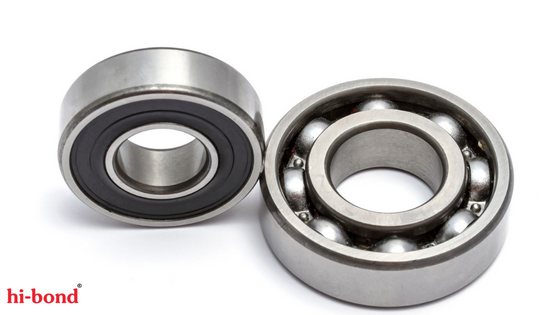
Proper maintenance of deep groove ball bearings ensures their longevity and effectiveness. Here are five tips to help keep your bearings in peak condition:
1. Keep them clean:
Deep groove ball bearings are susceptible to dirt and debris build-up, so it’s important to keep them clean. Regularly inspect the bearings and remove any foreign matter that has accumulated.
2. Lubricate them regularly:
Bearings must be properly lubricated to function correctly. Check the level of lubricant regularly and replenish it as needed.
3. Inspect for wear:
Deep groove ball bearings will experience wear and tear over time. Inspect the bearings regularly for signs of damage or excessive wear. If necessary, replace the bearings with new ones.
4. Protect from moisture:
Moisture can cause rusting and other forms of corrosion, so it’s important to keep deep groove ball bearings protected from it. Store them in a dry, sealed container when not in use.
5. Avoid extreme temperatures:
Extreme heat or cold can damage deep groove ball bearings, so avoid exposing them to extreme temperatures whenever possible.
Choose the Right Deep Groove Ball Bearing
We’ve got you covered if you’re in the market for quality Deep Groove Bearings. At our shop, we pride ourselves on carrying only the best brands and products, and our Deep Groove Bearings are no exception.
We know that when it comes to bearings, quality is key, and finding the right bearings and bushes suppliers is crucial to ensure better functionality. There are a few factors you need to consider. The first is the industry that you’re in. Not all bearings are created equal, and each type is designed for a specific industry or application. Secondly, you must ensure that the dimensions (inner diameter, outer diameter, and width) match those of the component you’re replacing. Also, you need to be aware of the operating temperature range. It will help you determine whether the bearing can handle the heat and stress associated with your industry.
At Hi-bond Bearings Pvt Ltd, one of the best bearing manufacturing companies, we only carry top-of-the-line bearings, and you’re sure to find the perfect one for your needs.
Come see us today and see what sets our Deep Groove Bearings apart from the rest!

